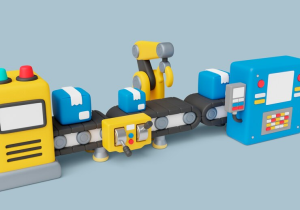11 Things To Consider Before Opting For OEM Server Solutions
4 min read
11 Things To Consider Before Opting For OEM Server Solutions
Are you looking for the best OEM solution providers? Don’t you know what to consider while hiring an IT company that can help you with customized OEM solutions? If so, this blog is worth a read.
The online landscape is loaded with ample service providers claiming to be the industry’s best. However, a reputable firm is a global supplier of IT products and services. They guarantee to offer the most standardized x86 servers in the industry and the best-selling digital devices. They’re world-class, supplying 20 million servers to more than 160 markets.
With OEM server solutions from such companies, your enterprise can build a solid technological foundation. This is why many multi-million businesses depend on these solutions.
In this blog, we’ll try to uncover the top priorities to consider while opting for OEM solutions providers:
-
Look At Their Products:
Undoubtedly, OEM has the most comprehensive portfolio of products in the industry. This includes laptops, phones, tablets, PC storage, and servers.
Your enterprise can customize its logo and corporate colors with a renowned service provider’s solutions. After integrating OEM products into your enterprise, you can perform business activities with a solid technological foundation. Besides, this also affects economies of scale by reducing the cost of production.
-
Check Out Their Lifecycle:
Typically, your enterprise gets a 5-year life availability for multiple products and product transitions. They can also help you plan to change next-generation products to emphasize your business proceedings completely.
With the help of comprehensive factory services that include software preloading, tracking, rack integration, full QA test/ validation, and customizations, your enterprise can optimize costs with shorter SLAs.
-
Compatibility and Integration:
Before purchasing an OEM server, it’s essential to consider its compatibility with your existing IT infrastructure and applications. Ensure the server’s hardware specifications, operating system compatibility, and management tools are compatible with your organization’s software ecosystem.
Additionally, assess the ease of integration with other IT components such as storage systems, networking equipment, and backup solutions to minimize compatibility issues and streamline deployment and management processes.
One of the advantages of OEM servers is the ability to customize hardware configurations to meet specific performance, storage, and scalability requirements.
Evaluate the customization options offered by the OEM, including processor choices, memory configurations, storage capacities, expansion slots, and networking capabilities. Customizing the server to align with your organization’s workload demands and growth projections ensures you get the best possible performance and value from your investment.
-
Lifecycle Management and Support:
Consider the lifecycle management and support services provided by the OEM to ensure your server infrastructure’s ongoing reliability and performance. Look for vendors that offer comprehensive support plans, including warranty coverage, proactive monitoring, firmware updates, and timely technical assistance.
Additionally, assess the availability of spare parts, documentation, and online resources to facilitate troubleshooting and maintenance tasks and minimize downtime during hardware failures or issues.
-
Scalability and Future Expansion:
As your organization grows and evolves, your server infrastructure needs to scale and adapt to accommodate increased workloads and changing requirements. Evaluate the scalability options offered by the OEM, such as modular designs, hot-swappable components, and support for virtualization technologies.
A scalable server architecture enables you to expand your infrastructure seamlessly, adding resources as needed without disrupting operations or incurring significant downtime.
-
Energy Efficiency and Environmental Considerations:
Energy efficiency is critical for data center operators looking to minimize operating costs and reduce their environmental footprint. Assess the OEM server’s energy efficiency ratings and power consumption, including factors such as power supplies, cooling systems, and idle power consumption.
Look for servers certified with energy-efficient standards such as ENERGY STAR or 80 PLUS, which can help lower energy bills and contribute to sustainability initiatives.
-
See Their Logistics:
Logistics align the complex processes of traffic and transportation. In businesses, success in logistics can translate to increased efficiency in operations, cost reductions, higher production rates, better inventory control, and more.
Combining all these factors results in a boom in organizational revenue and customer satisfaction.
-
Evaluate Hardware Expertise:
Yeah! The integration of technology can be complicated. With effective knowledge of hardware management, enterprises can reduce the significant costs of automating routine tasks that consist of record keeping, accounting, and payroll management.
Moreover, regular hardware maintenance helps businesses avoid unforeseeable circumstances such as damage and significant loss. Routine hardware maintenance of physical components allows organizations to uphold operational integrity and manage reliable IT infrastructure.
-
Prioritize Security:
The establishment of advanced security infrastructure can be a worthy investment. It enables organizations to realize profits by:
Making business units equipped to embrace more risks while entering new markets.
Enabling businesses to become resilient in handling and managing IT threats.
-
Security Features and Compliance:
Security is paramount in today’s digital landscape, particularly for servers housing sensitive data and critical workloads. Evaluate the OEM 2u server security features and compliance certifications, including built-in encryption capabilities, secure boot options, and support for industry-standard security protocols.
Additionally, ensure that the server meets regulatory requirements and industry standards such as GDPR, HIPAA, PCI DSS, or SOC 2 to safeguard your organization’s data and mitigate the risk of security breaches or compliance violations.
-
Total Cost of Ownership (TCO) Analysis:
When assessing the viability of owning an OEM server, it’s crucial to conduct a comprehensive Total Cost of Ownership (TCO) analysis to evaluate the long-term costs associated with acquisition, deployment, operation, and maintenance.
Consider upfront hardware costs, ongoing support and maintenance expenses, energy consumption, and potential savings from improved performance, scalability, and efficiency. A TCO analysis helps you make informed decisions and determine the most cost-effective solution that aligns with your organization’s budget and business objectives.
Conclusion:
Any enterprise can perform its business processes efficiently by considering these eleven factors: factory services, products, lifecycles, logistics, hardware expertise, and more. So, always research these factors properly while opting for your OEM server.




